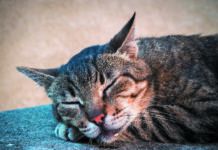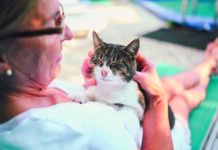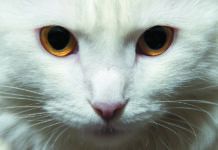[From Tufts March 2011 Issue]
I need information concerning anal gland issues. Approximately every four months, I need to take my 4-year-old Siamese to the veterinary clinic to have his anal glands expressed.
My concern is how often this is happening, and whether there is anything I can do to be more proactive in his daily care. His current diet consists of dry cat food and a few daily cat treats. He also drinks plenty of water.
Debb
Dear Debb: The anal sacs (often referred to as glands) are two small, balloon-like structures located just under the skin at 4- and 8 o’clock positions around the anus. The glands are similar to the “skunk glands” of skunks. The anal sacs create and store a liquid with a characteristic foul-smelling odor. The anal glands are normally expressed during defecation and a small amount of this fluid is expelled along with the stool. Anal sacs are thought to play a role in territorial marking.
The anal glands may become infected, and antibiotic therapy will often cure the problem. The presence of infection would be suggested by a bloody discharge. More commonly the anal sacs are not infected, but the characteristic of the anal sac material changes from its normal liquid consistency to a dry, pasty or crumbly texture. The cause for this change is unknown. In these cases, the anal sacs cannot empty, become stretched and uncomfortable, and dragging of the bottom or licking at the area may occur. In severe cases, the anal sac may burst under the skin and a large swollen area may develop.
Medical treatment for anal sac disease is sometimes effective. Adding fiber to the diet is thought to cause additional emptying of the sacs during defecation. Dehydration should be avoided to prevent the anal sac material from drying. Manually expressing the anal sacs (using a gloved finger inside the rectum) is often performed when distention is detected. In many cases, just one or two expressions will solve the problem.
If repeated expressions are needed, the remaining option is to surgically remove the anal sacs. This surgery is delicate and great care must be used to prevent damaging the muscles that prevent leakage of stool.
I generally express the anal sacs once or twice and assess the response. If cure is not attained, one option would be periodic expression for the remainder of the cat’s life. However, if the problem is recurring, I would discuss the pros and cons of removal of the anal sacs with your veterinarian. In most cases, a surgical cure will be obtained.
Michael Stone DVM, DipACVIM
Cummings School of Veterinary
Medicine at Tufts University



